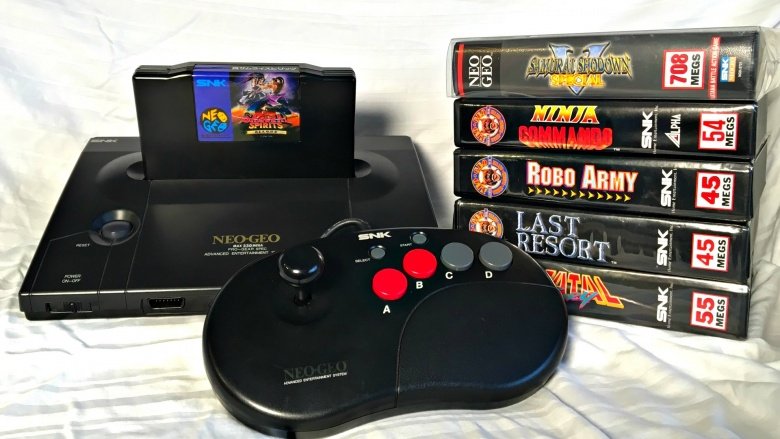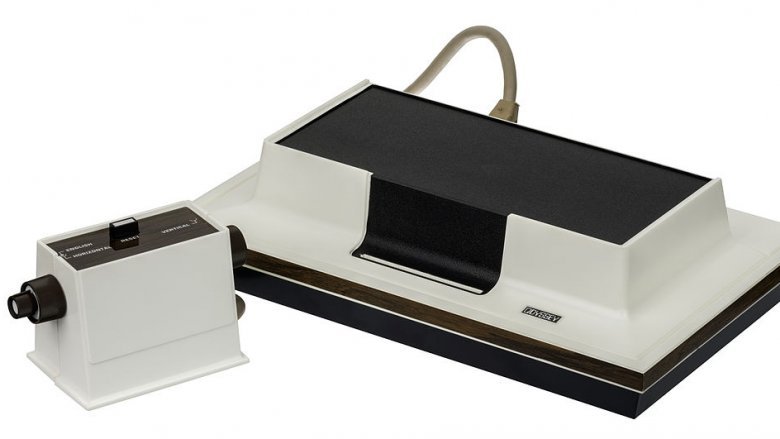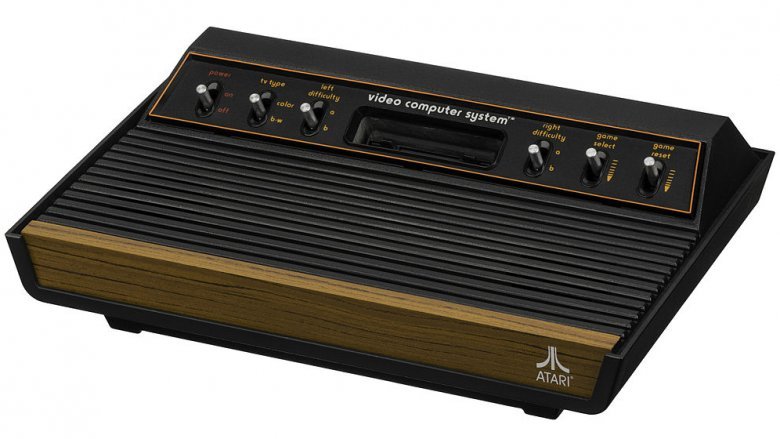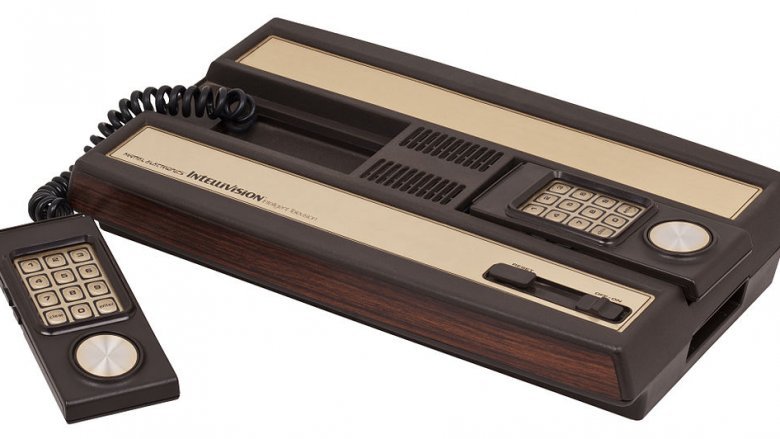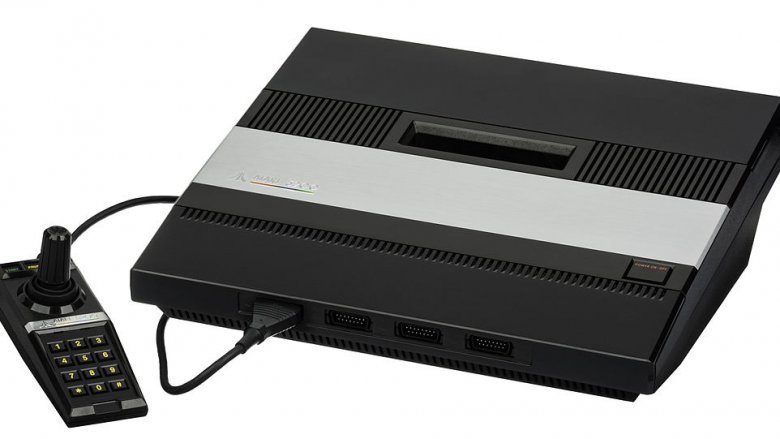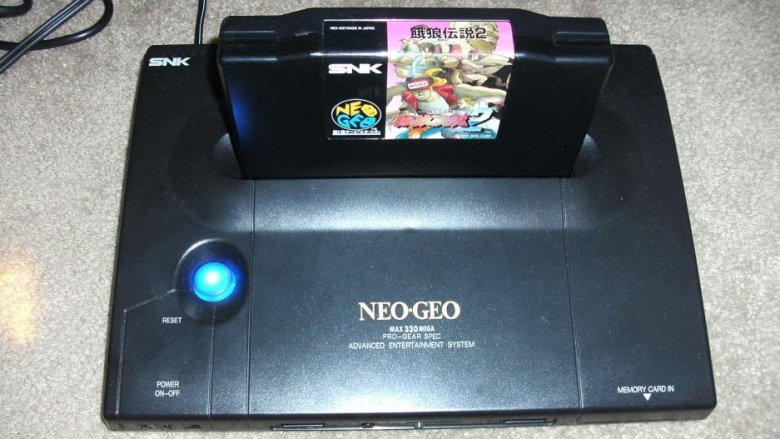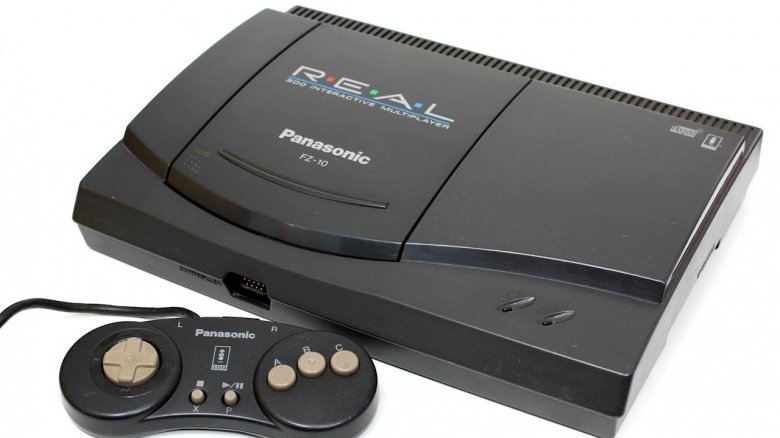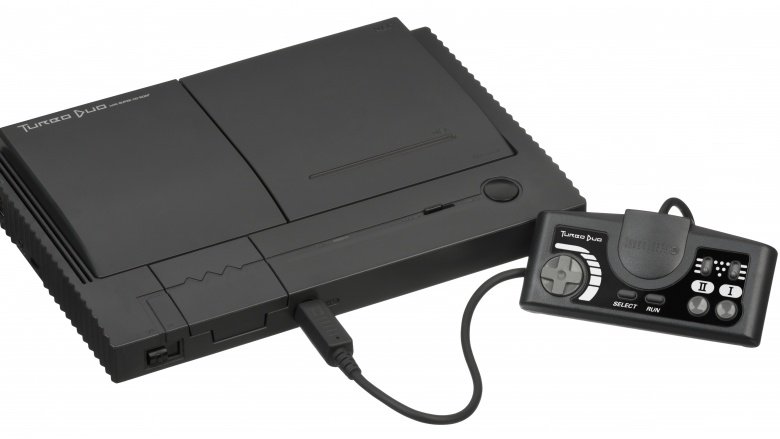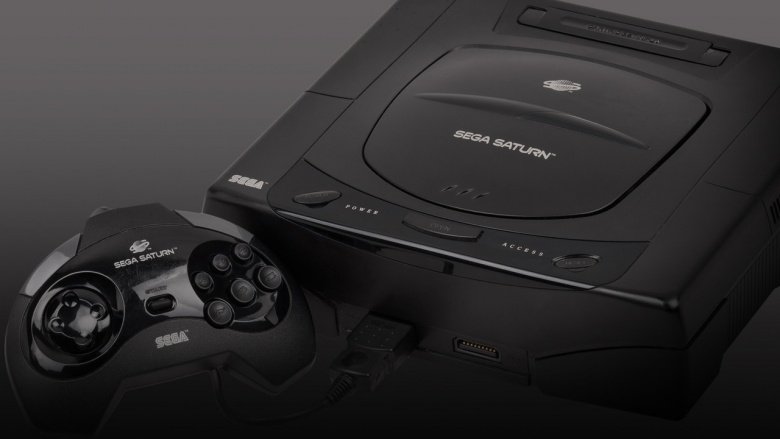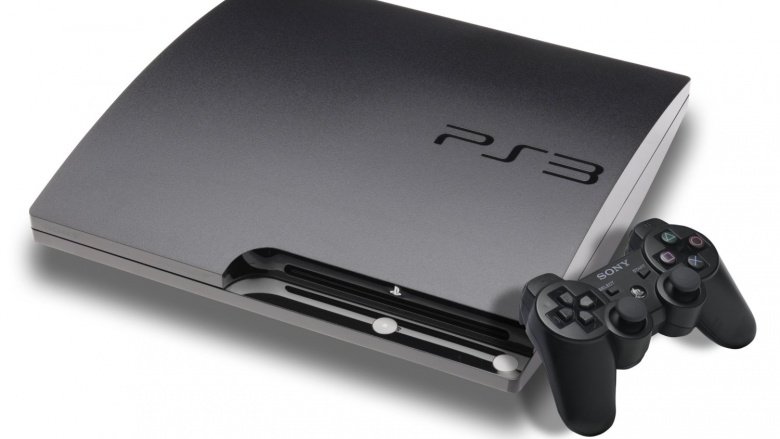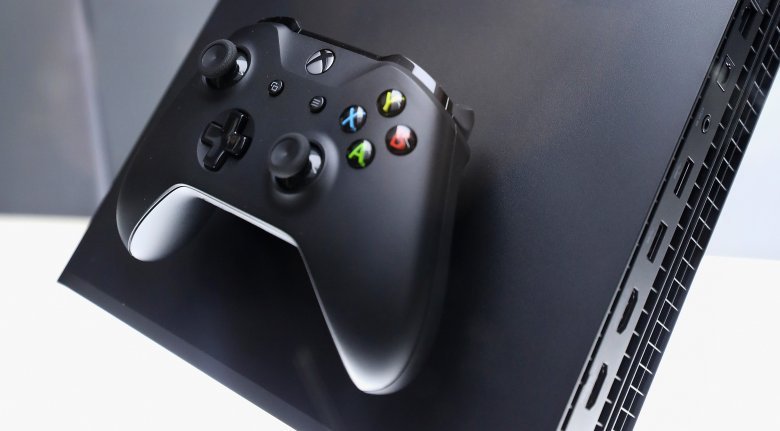Most Overpriced Video Game Consoles In History
Video gamers are positively bursting with techno-joy for their favorite hobby, and are totally willing to break out their credit cards — multiple ones, if necessary — for the next big console. That is, assuming said system isn't absurdly, cartoonishly expensive. Below are some of the most overpriced gaming systems ever — when adjusted for inflation, one such system sold for a ludicrous $1272.76! It, like many other crazily-priced consoles, failed to gain popular support, mostly because nobody could afford it.
Magnavox Odyssey
Cost in 1972: $99.99
Adjusted for inflation: $580.73
Released in 1972 for a hundred bucks (or $580 in today's money), the Magnavox Odyssey was the first gaming system ever. Whatever game you're playing now probably wouldn't exist if not for the Odyssey — which, fun fact, was originally called "The Brown Box." As hilarious as that is, it's probably best that they changed it.
It's fascinating to look back and see how this revolutionary machine did, well, very little. It had a whopping 28 games, according to Video Game Console Library. Most of these were "ball and paddle" games like Ping-Pong, Table Tennis, and others that all featured the same thing: two paddles, a ball, and a line down the middle. It had no specs to speak of — you added color and graphics by sliding plastic figurines over your TV screen, there was no memory, and the games were on cards, rather than cartridges. Plus, it only lasted three years before being discontinued in 1975, according to pong-story.com. Nevertheless, it was still unlike anything anyone had ever seen, and it reportedly 100,000 units in its first year alone.
It was a boon for Magnavox TVs, too. The company outright lied to its customers, claiming the Odyssey would only work on Magnavox TVs. This was total baloney, but people bought Magnavox TVs galore anyway. This was pre-internet, remember, when you could freely lie your face off and not have tens of thousands of people calling out your whoppers on social media.
Atari 2600
Cost in 1977: $199-229Adjusted for inflation: $790.61-909.80
Selling for anywhere from $199-$229, depending on the package you bought, the Atari 2600 ran people a good chunk of change back in 1977. Adjusted for inflation, consumers were paying anywhere from $790 to just over $900 in 2017 money. But for gamers who didn't want to trudge a pocket full of heavy quarters down to the arcade just to play Space Invaders, being able to do so at home was a godsend.
Sadly, as great as the 2600 was, it played a huge role in the video game crash of 1983. According to Pitfall creator David Crane during an interview with Arcade Attack, an oversaturation of mediocre-to-terrible games, including the infamously abysmal ET for the 2600, caused tons of people to abandon gaming. The industry didn't really recover until the NES in 1985. Nevertheless, the Atari 2600 chugged along until 1992 — while we were happily playing Sonic The Hedgehog and Super Mario World, Atari was somehow still cranking out 2600s and partying like it was 1979. Their '90s contributions? Blocky, primitive-looking games like Acid Drop that were still way more fun than Pit Fighter.
Intellivision
Cost in 1980: $300
Adjusted for inflation: $943.70
Today, smart technology is taken for granted — our phones are smart, our computers are smart, even our lightbulbs are smart. But in 1980, very few aspects of life were smart, a void Mattel tried to fill with Intellivision. For a mere $300 (almost $950 in today's money), you got an "intelligent television" (now you get the name) that could play much more realistic-looking and sounding games than Atari. But it wasn't just a game system — with the additional "keyboard component," scheduled for release in 1982, it could also help you learn French, get fit, budget for your family, work on your spelling skills, and even cook you a nice meal (OK, not really).
The keyboard, however, never made it beyond test markets and mail ordering — according to Intellivision Lives, the constant delays inspired complaints from consumers who bought the Intellivision because of the keyboard, the FTC investigated Mattel for fraud and even fined them $10,000 per month until the keyboard was in full distribution. The company eventually just canceled the thing outright. It would cost an insane $600, by the way, a whopping $1,557 in 2017, so probably it would've priced itself out of the market anyway, intelligent or not.
Atari 5200
Cost in 1982: $299
Adjusted for inflation: $775.98
Atari may have revolutionized early gaming, but that doesn't mean everything they did was awesome. Case in point: the Atari 5200 Supersystem, the 2600's successor that went absolutely nowhere. Imagine the SNES hitting the market and nobody giving a crap. It's basically that. Retailing for an insane $299 in 1982 ($775 in 2017), the 5200 was supposed to be the next big thing. But it turned out to not even be the next small thing.
For starters, it had terrible controllers. They looked like giant TV remotes with a joystick on top, and many of the buttons only sometimes worked, according to Retro Auction. Then, there was the issue of backwards compatibility — mainly that there was none. According to The New York Times Guide to Essential Knowledge, Atari didn't let people play 2600 games on the 5200, choosing instead to charge them extra for "new" games that were mostly updated versions of old ones. Bad move. The PS4 might not have backwards compatibility either, but at least its games are a little better than the likes of Dig Dug and Gorf.
Despite reportedly selling a million units, the 5200 was ultimately a bad look for Atari, and with the 7800 on the way, the company discontinued the 5200 in 1985. Few cared, though presumably many mourned the 300 bucks they'd never see again
Neo Geo
Cost in 1991: $650
Adjusted for inflation: $1,101.85
SNK's Neo Geo console debuted in 1991 for $650. That's almost $1,200 in 2016! Keep in mind as well, that if you wanted to actually play any games on the Neo Geo—and not just use it as an expensive paperweight—you'd have to pony up about 200 British pounds for each cartridge (at least $150). Were these cartridges made out of platinum? Kryptonite? Dodo bird carcasses? Every kid in the 1990s had a friend whose cousin owned a Neo Geo. It was like some sort of mythical creature that no one saw themselves, and the proof of its existence only came from vague, secondhand stories. This is unfortunate, because the Neo Geo had a decent library of titles, assuming you enjoyed fighters like Samurai Showdown or run-and-gun games like Metal Slug.
Philips CD-i
Cost in 1991: $700
Adjusted for inflation: $1,272.76
The Philips CD-i was essentially a computer for your television that lacked a hard drive. Consumers balked, however, when Philips launched the CD-i with a $700 price tag in 1991 (almost $1275 in 2017 money!). To make matters worse, the system hosted some truly awful games. In what we surmise involved some kind of blackmail, Nintendo gave Philips the rights to make three games based upon its venerable Legend of Zelda franchise. These three titles—informally known as the Unholy Triforce—are considered to be among the worst video games ever created. How bad can they be? Witness the horror for yourself, and then weep as those who actually, foolishly played them did.
Panasonic 3DO
Cost in 1993: $700
Adjusted for inflation: $1,201.35
Panasonic launched its ill-fated 3DO video game console in 1993. The system had some great games such Star Control 2, Return Fire, and Plumbers Don't Wear Ties ... just kidding on that last one. Okay, so it didn't have a lot of great games, but its library was a shining beacon compared to the abyss that was the Atari Jaguar. Nevertheless, almost no one played 3DO games, because their parent system cost a savings account-busting $700 at launch. That would be just over $1,200 in 2017! What else could you buy with $1,200? College textbooks, perhaps? Hire someone to beat you over the head for thinking about buying a 3DO? Considering the 3DO's price, it comes as no surprise that most gamers went with the cheaper Sony Playstation and Nintendo 64.
Turbo Duo
Cost in 1995: $300
Adjusted for inflation: $478.31
Remember the Turbo Duo? Probably not. The console was a last-ditch effort by the Japanese tech firm NEC to regain a foothold in the United States, after their Turbo Grafx-16 fell behind both the Super Nintendo and Sega Genesis in popularity and sales. Sorry, Bonk the Caveman, but everyone preferred the blue hedgehog and mushroom-eating plumber. So in 1995, Instead of creating a new system, however, NEC unwisely decided to take the one that no one was playing, combine it with its equally unpopular CD expansion, and release the hybrid creature as one console for $300 (over $475 in 2017). If your parents were rich enough to buy you a TurboDuo for Christmas, then you could be certain of one thing—the all-night, Mountain Dew-fueled video game sleepovers weren't happening at your house.
Sega Saturn
Cost in 1995: $400
Adjusted for inflation: $651.32
After sucking the Genesis dry like a corporate vampire, Sega finally cast aside the desiccated corpse of its 16-bit progeny and released a new 32-bit console, the Sega Saturn, in 1995. Gamers' excitement died down once they saw the Saturn cost a whopping $400 (over $650 in 2017 money). This high price point didn't help Sega's poor reputation—many fans were still stinging from buying the Genesis add-on, 32X, one year prior, but they were rewarded with lackluster ports of Primal Rage and Virtua Fighter. This dissatisfaction with the 32X, combined with the Saturn's high price, made it seem like Sega was callously milking gamers for money. As a result, they turned away from Sega in favor of Sony and Nintendo. Sega stopped supporting the Saturn in the U.S. by 1998, took it out back behind the house one night, and quietly buried it under the stars.
PlayStation 3
Cost in 2006: $500-600
Adjusted for inflation: $617.08-$740.49
Unlike the other consoles in this article, the PlayStation 3 was a huge success ... eventually. Sony offered two, stupidly expensive PS3 models for the system's 2006 launch—a 20-GB version for $500, and a 60-GB version for $600. Sony justified the price by pointing to the PS3's Blu-Ray player, which at that time was a novelty. But who wanted that? Everyone knew that HD DVD was the real next big thing, right? The PS3's exorbitant price helped the Nintendo Wii—a comparative steal at $250—become more popular. Mom and Dad were content that they could use the money they saved by buying a Wii that Christmas, to help pay down their subprime mortgage.
XBox One X
Cost in 2017: $499
The XBox One X is Microsoft's most advanced console yet. But regardless of whether you're Team XBox, Club PlayStation, or a diehard Nintendork, we can all agree on two things: the "XBox One X" is a mouthful of a name, and Microsoft sure wants lots of money for it. At launch, the console costs $499 for the system alone. Is paying half a G for the shiniest video games around really worth it?
Sadly, maybe not. With 4K graphics, 12 gigabytes of memory, and the ability to both play XBox One games and make them look better, XBox One X certainly sounds awesome and badass. Here's the problem, though: it's all style, and no substance. As Aaron Greenberg, head of XBox Marketing, admitted over Twitter, the XBox One X — for 500 beans, remember — will offer no new, exclusive games. It will simply make your existing XBox games look prettier and sound better. Meanwhile, you can get a regular XBox One for half that price these days, and its graphics aren't exactly godawful either. Why pay half a grand for what's essentially a nifty little makeover?
Then, there's the 4K issue. According to Fortune, very few people have 4K TVs. In 2016, maybe 10 percent of people had one. More of us may have them in the coming years, but it's still incredibly risky for Microsoft to sell its new system relying on a technology that a huge chunk of its audience simply doesn't have.
Maybe with a price drop and some actual exclusive games to justify the purchase, there may be hope for the XBox One X. Otherwise, best just save your money for Microsoft's next actual system, which will probably have an even goofier name. Hopefully it'll be the "XBox 2 XL."
